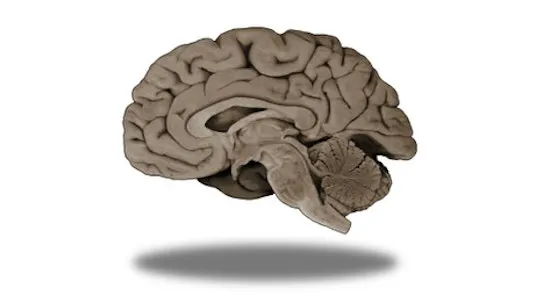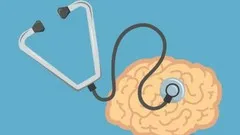
Foundational Neuroscience for Perception and Action 
This course provides a comprehensive overview of foundational neuroscience for perception and action. It is a condensed version of a medical school-level course, offering an in-depth exploration of the brain and its role in human behavior. ▼
ADVERTISEMENT
Course Feature
![]() Cost:
Cost:
Free
![]() Provider:
Provider:
Coursera
![]() Certificate:
Certificate:
Paid Certification
![]() Language:
Language:
English
![]() Start Date:
Start Date:
30th Mar, 2015
Course Overview
❗The content presented here is sourced directly from Coursera platform. For comprehensive course details, including enrollment information, simply click on the 'Go to class' link on our website.
Updated in [March 06th, 2023]
The course is divided into four modules. The first module introduces the basic components of the human central nervous system, the means by which nerve cells generate electrical signals and communicate, and the neural mechanisms of synaptic and circuit plasticity. The second module focuses on the organization of the sensory systems, including vision, audition, somatosensation, and the vestibular system. The third module focuses on the organization of the motor systems, including the control of posture and movement. The fourth module focuses on the integration of sensory and motor systems in the production of behavior. Each module includes lectures, readings, and problem sets. At the end of the course, learners will be able to explain the basic components of the human central nervous system, the means by which nerve cells generate electrical signals and communicate, the neural mechanisms of synaptic and circuit plasticity, and the organization of the sensory and motor systems that integrate experience and motivate behavior.
[Applications]
Learners who complete this course will be able to apply their knowledge of foundational neuroscience to their own research, teaching, or professional practice. They will be able to use their understanding of the neural mechanisms of perception and action to design experiments, develop curricula, or create virtual reality or gaming experiences that are more closely aligned with the way the brain works. They will also be able to use their knowledge to better understand the implications of brain-based research for their own field.
[Career Paths]
Recommended career paths for learners of this course include:
1. Neuroscientist: Neuroscientists study the structure and function of the nervous system, including the brain, spinal cord, and peripheral nerves. They use a variety of techniques, such as electrophysiology, imaging, and molecular biology, to understand how the nervous system works and how it is affected by disease. Neuroscientists are in high demand, and the field is expected to continue to grow as new technologies and treatments are developed.
2. Cognitive Scientist: Cognitive scientists study the mental processes that underlie human behavior, such as memory, perception, language, and problem solving. They use a variety of methods, such as experiments, computer simulations, and brain imaging, to understand how the brain works and how it can be improved. Cognitive science is a rapidly growing field, and there are many opportunities for those with the right skills and knowledge.
3. Virtual Reality Developer: Virtual reality developers create immersive experiences for users by combining computer graphics, sound, and other sensory inputs. They use a variety of technologies, such as 3D modeling, game engines, and motion tracking, to create realistic virtual environments. As virtual reality technology continues to advance, there is an increasing demand for developers with the skills and knowledge to create compelling experiences.
4. Robotics Engineer: Robotics engineers design, build, and program robots for a variety of applications, such as manufacturing, healthcare, and entertainment. They use a variety of technologies, such as sensors, actuators, and computer vision, to create robots that can interact with their environment. Robotics engineering is a rapidly growing field, and there are many opportunities for those with the right skills and knowledge.
[Education Paths]
Recommended degree paths include:
1. Neuroscience: Neuroscience is a rapidly growing field that focuses on the study of the nervous system. It is an interdisciplinary field that combines elements of biology, psychology, chemistry, and physics. Neuroscience degree programs typically include courses in anatomy, physiology, pharmacology, biochemistry, and molecular biology. Students will also learn about the development, structure, and function of the nervous system, as well as the behavior and cognition of humans and animals.
2. Cognitive Science: Cognitive science is an interdisciplinary field that studies the nature of the mind and how it works. It combines elements of psychology, philosophy, linguistics, computer science, and neuroscience. Cognitive science degree programs typically include courses in cognitive psychology, artificial intelligence, linguistics, and neuroscience. Students will learn about the structure and function of the brain, as well as the development of language, memory, and problem-solving.
3. Computer Science: Computer science is a field that focuses on the design, development, and implementation of computer systems and software. It is an interdisciplinary field that combines elements of mathematics, engineering, and computer science. Computer science degree programs typically include courses in programming, algorithms, data structures, and computer architecture. Students will learn about the design and development of computer systems, as well as the principles of software engineering.
4. Virtual Reality: Virtual reality is a field that focuses on the development of immersive, interactive, and computer-generated environments. It is an interdisciplinary field that combines elements of computer science, engineering, and psychology. Virtual reality degree programs typically include courses in computer graphics, computer vision, and human-computer interaction. Students will learn about the design and development of virtual environments, as well as the principles of user experience design.
Course Provider

Provider Coursera's Stats at AZClass
Discussion and Reviews
0.0 (Based on 0 reviews)
Explore Similar Online Courses

Free Anatomy Tutorial - Medical Anatomy

Fundamentals Of Protein Chemistry

Python for Informatics: Exploring Information

Social Network Analysis

Introduction to Systematic Review and Meta-Analysis

The Analytics Edge

DCO042 - Python For Informatics

Causal Diagrams: Draw Your Assumptions Before Your Conclusions

Whole genome sequencing of bacterial genomes - tools and applications

Control Your Subconscious Mind: Neuroscience Hidden Secrets

Perform an Excellent Neurological Bedside Exam

Brain and Behavioral Science Fundamentals
 Related Categories
Related Categories
 Popular Providers
Popular Providers
Quiz
 Submitted Sucessfully
Submitted Sucessfully
1. What is the overall goal of this course?
2. What is the focus of Foundational Neuroscience for Perception and Action?
3. Who is this course for?
4. What is the overall goal of the course Foundational Neuroscience for Perception and Action?
Correct Answer: To equip learners to be successful in the specialization Perception, Action and the Brain.


Start your review of Foundational Neuroscience for Perception and Action